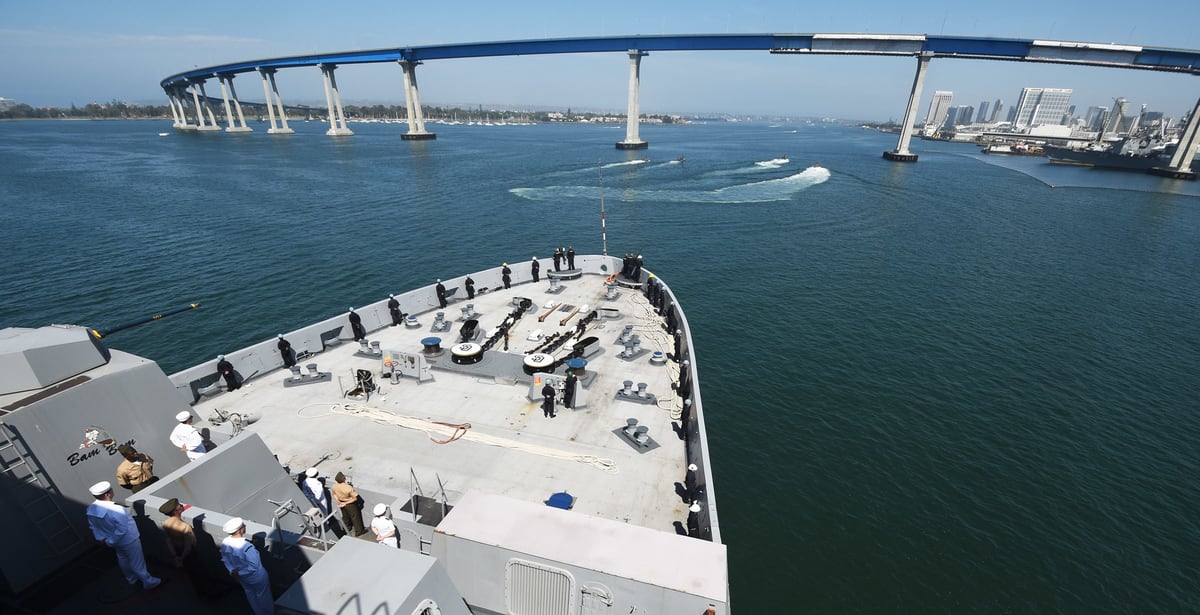WASHINGTON – AT&T claims initial success in setting up a 5G network experiment that could enable “smart warehouses” for the U.S. Navy, with its network demonstrating data throughput speeds greater than 4 gigabits per second.
The Department of Defense wants to establish a smart warehouse, where autonomous robots, cameras, augmented reality systems and other Internet of Things applications are connected over a 5G network to revolutionize warehouse operations. If successful, the Navy believes the smart warehouse concept could increase the efficiency and fidelity of its logistics operations, helping with a number of tasks such as “identification, recording, organization, storage, retrieval, and transportation of materiel and supplies.”
Demonstrating the 4 gigabits per second throughput with less than 10 milliseconds of latency is the first milestone of that effort, said AT&T in a statement. Now the company will move its equipment from the demonstration in Texas out to San Diego, where it will commence with delivering its 5G network across the 120,000 square foot Naval Base Coronado warehouse. Once that is completed, AT&T will begin integrating official Navy systems to enable the various smart warehouse capabilities.
In addition to AT&T’s work on the network, the Department of Defense issued contracts to GE Research, Vectrus Mission Solutions and Deloitte for work on applications.
The smart warehouse project is part of a $600 million investment by the Pentagon in testing and experimenting with 5G networks at military installations. That first tranche of 5G investments includes a dynamic spectrum-sharing project at Hill Air Force Base in Utah, an augmented reality and virtual reality training project at Fort Hood in Texas, and a second smart warehouse project at Marine Corps Logistics Base in Georgia. A fifth base – Nellis Air Force Base – was selected for mobile testing, using relocatable cell towers that can be set up and taken down in less than an hour.
The 5G smart warehousing experiment at Marine Corps Logistics Base is specifically focused on vehicle storage and maintenance. The Department of Defense announced in June 2021 that it had successfully demonstrated its 5G network there, delivering high-speed downloads of 1.5 gigabits per second with less than 15 milliseconds of latency.
AT&T was also selected as the primary 5G networking services provider for the demonstration at Fort Hood that will be used for augmented reality and virtual reality training. Specifically, the network will be used for training on the Instrumentable Multiple Integrated Laser Engagement System (I-MILES) and the Army’s Integrated Visual Augmentation System (IVAS).
The Pentagon followed up its initial 5G investment in 2021 with contracts for several more sites.
DoD’s acting principal director for 5G, Amanda Toman, noted in January that the Tranche 1 testbed and networks had been set up.
“I think over the next 12 months, we will have much more data out of Tranche 1,” Toman said. “And with Tranche 2, we’ll get to a point where we have testbeds stood up and [are] starting to work towards development of those applications.”
Nathan Strout covers space, unmanned and intelligence systems for C4ISRNET.








